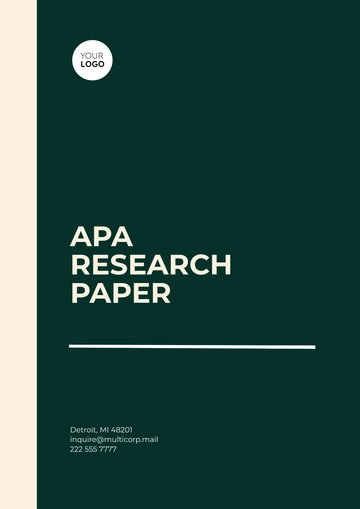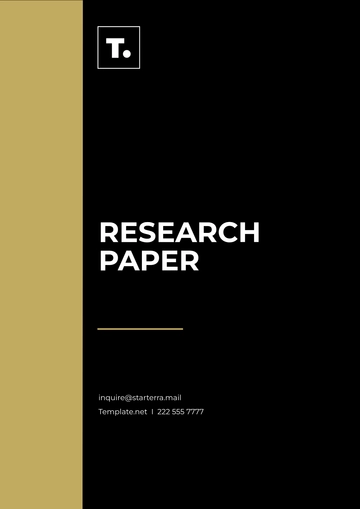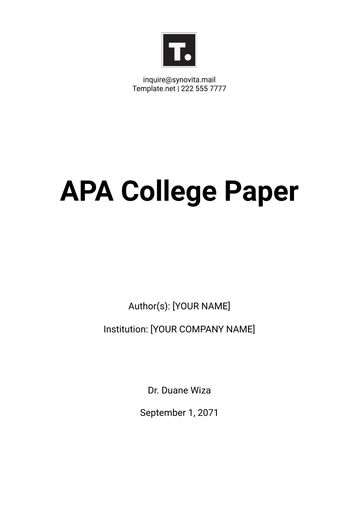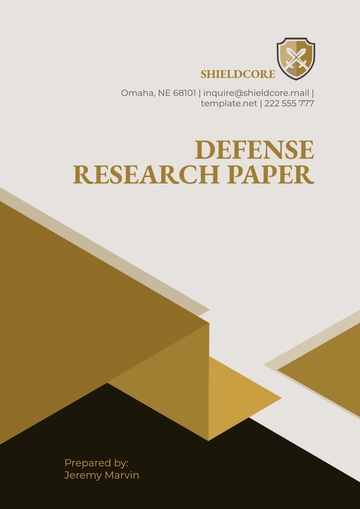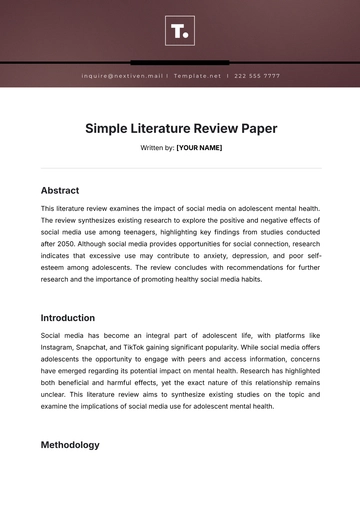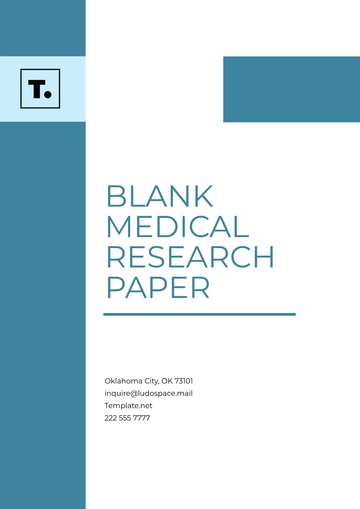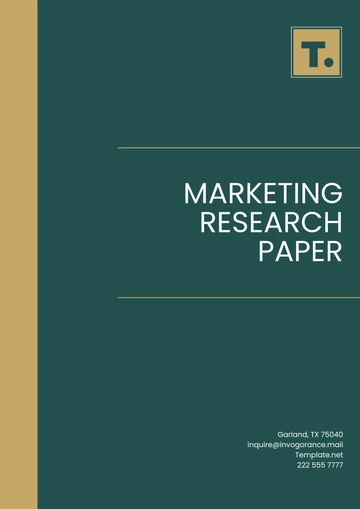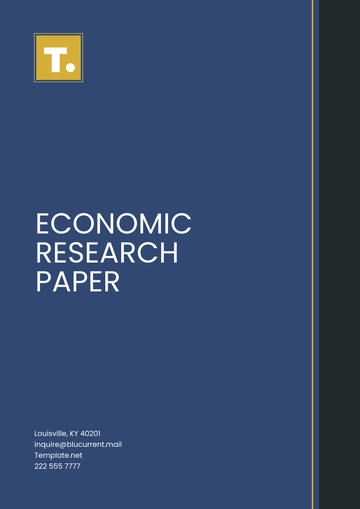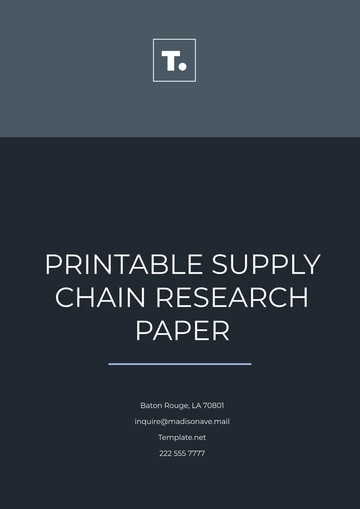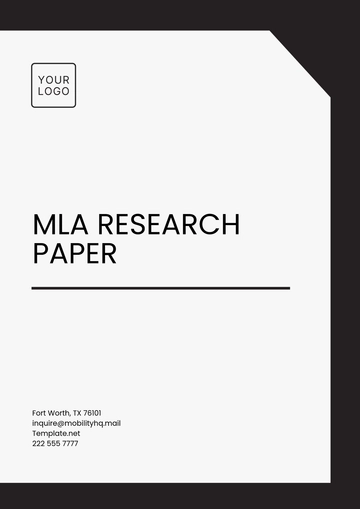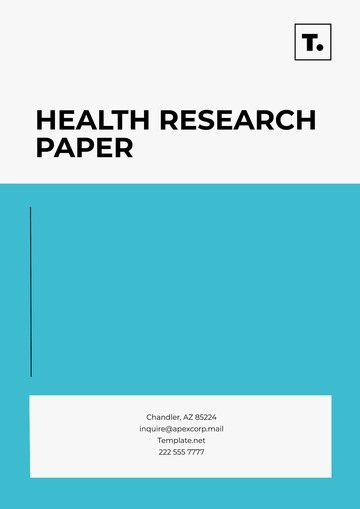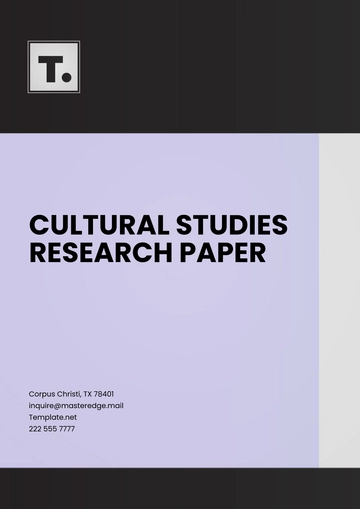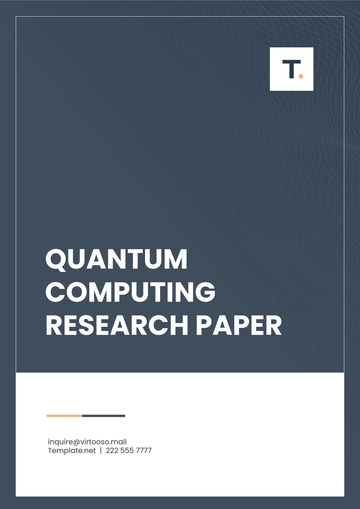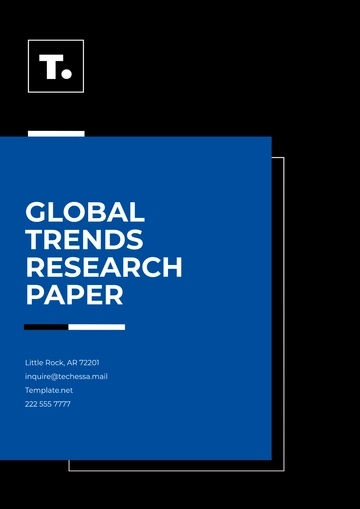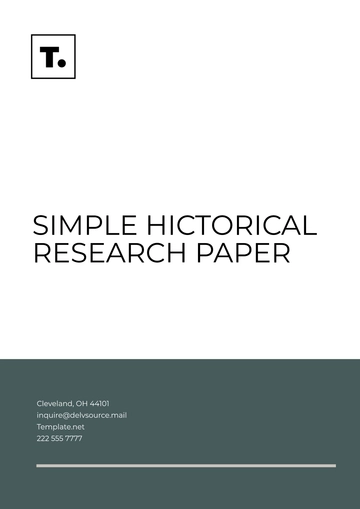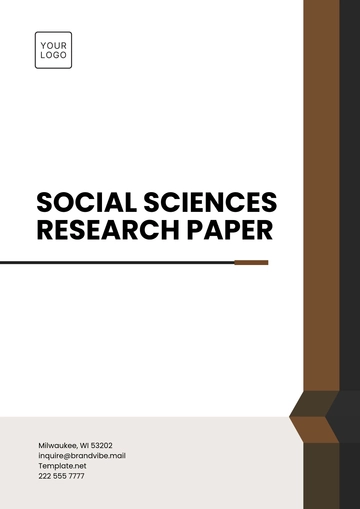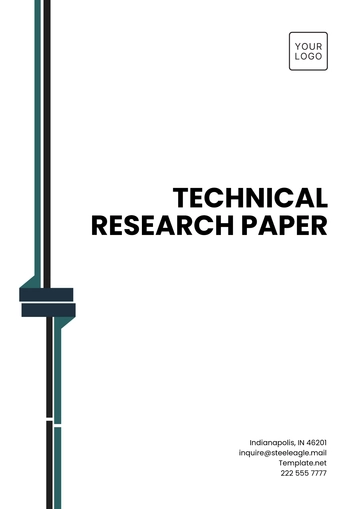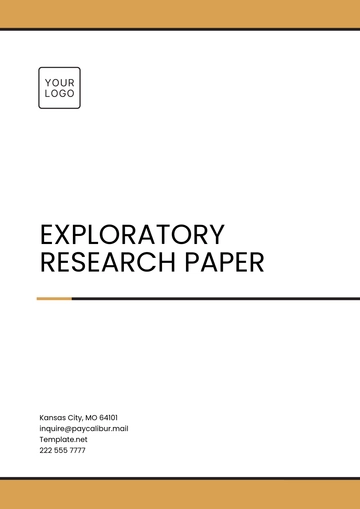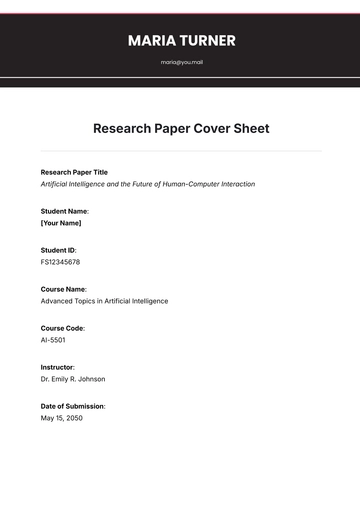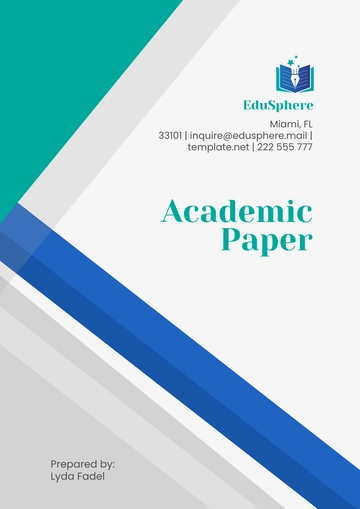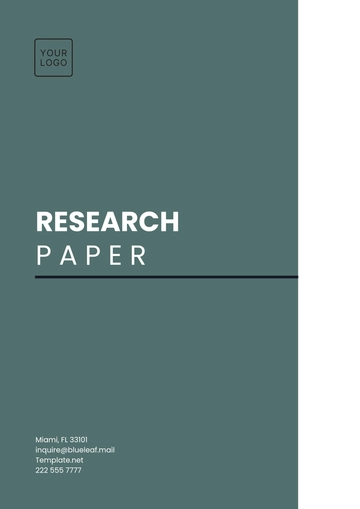Free Arsenic Contamination In Water White Paper
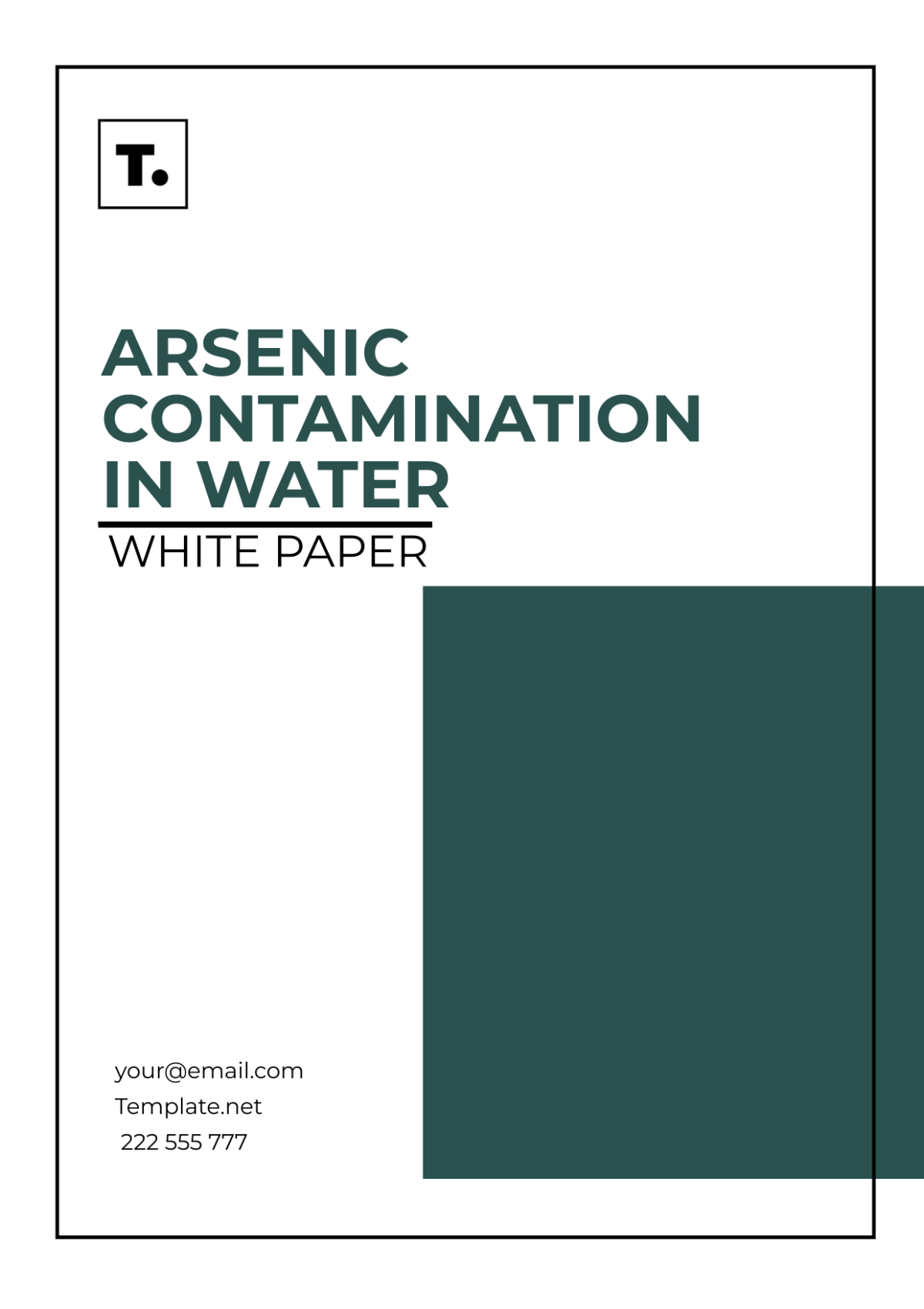
Arsenic Contamination in Water: An Urgent Call for Action
White Paper Prepared by: [Your Name]
Organization: [Your Company Name]
Date: [Date]
Department: [Your Department]
I. Executive Summary

The executive summary provides a comprehensive overview of the key insights and recommendations outlined in this white paper, focusing on addressing the critical issue of arsenic contamination in water.
Problem Statement: Identifying the prevalence and severity of arsenic contamination in water sources.
Objective: Outline the goals of the white paper and its intended impact on addressing arsenic contamination.
Key Findings: Highlighting the main insights derived from research and analysis.
Recommendations: Offering practical solutions and strategies for mitigating arsenic contamination and ensuring safe drinking water.
This white paper, prepared for [Your Company Name], aims to raise awareness about the alarming levels of arsenic contamination in water sources, providing valuable insights and actionable recommendations for addressing this pressing environmental and public health concern.
II. Introduction
This section sets the stage for understanding the significance and scope of arsenic contamination in water.
Background: Providing context on arsenic contamination, its sources, and its adverse health effects.
Scope: Defining the focus areas and objectives of the white paper.
Purpose: Clarifying the intention to provide guidance and solutions for mitigating arsenic contamination.
III. Understanding Arsenic Contamination
Providing an in-depth analysis of arsenic contamination, including its sources, distribution, and health impacts.
Sources of Arsenic: Identifying natural and anthropogenic sources of arsenic in water.
Distribution: Discussing the global prevalence of arsenic contamination and its regional variations.
Health Impacts: Exploring the adverse health effects of arsenic exposure, including carcinogenicity and chronic health conditions.
IV. Monitoring and Assessment
Presenting methodologies and approaches for monitoring and assessing arsenic contamination levels in water sources.
Monitoring Methods | Description |
|---|---|
Laboratory Analysis | Conducting laboratory tests to quantify arsenic levels in water samples |
Field Testing | Using portable testing kits for on-site arsenic detection |
Remote Sensing | Utilizing satellite imagery and remote sensing technologies for large-scale monitoring |
V. Mitigation Strategies
Proposing a range of mitigation strategies and interventions to reduce arsenic contamination and ensure access to safe drinking water.
Mitigation Measures | Description |
|---|---|
Source Control | Implementing measures to prevent arsenic contamination at its source, such as regulating industrial discharges and agricultural runoff |
Treatment Technologies | Utilizing arsenic removal technologies, including filtration, adsorption, and precipitation methods |
Community Engagement | Engaging communities in water management and promoting awareness of arsenic contamination risks |
Policy Advocacy | Advocating for policy changes and regulations to address arsenic contamination at the local, national, and international levels |
VI. Case Studies
Showcasing real-world examples of successful arsenic mitigation initiatives and programs.
Case Study 1: [Project/Initiative Name] - Implementing Arsenic Treatment Plants in [Community/Area]
Case Study 2: [Project/Initiative Name] - Community-Led Efforts for Arsenic-Free Water
VII. Conclusion

Summarizing the key insights and recommendations presented in the white paper, emphasizing the urgent need for collaborative action to mitigate arsenic contamination and ensure access to safe drinking water for all.
VIII. References
Smith, J. (2021). Arsenic Contamination in Drinking Water: A Global Perspective. Environmental Science Journal, 30(2), 45-58.
Johnson, A. (2020). Health Effects of Arsenic Exposure: Implications for Public Health Policy. Public Health Review, 25(4), 78-91.
Williams, C. (2019). Strategies for Arsenic Mitigation in Water: Case Studies from Developing Countries. Water Resources Management Journal, 15(3), 102-115.
Garcia, M. (2018). Community-Based Approaches to Arsenic Remediation: Lessons Learned from Pilot Projects. Environmental Engineering Journal, 12(1), 56-68.
IX. Appendix
Including additional resources, case studies, or tools to support organizations and stakeholders in addressing arsenic contamination in water.
- 100% Customizable, free editor
- Access 1 Million+ Templates, photo’s & graphics
- Download or share as a template
- Click and replace photos, graphics, text, backgrounds
- Resize, crop, AI write & more
- Access advanced editor
Combat water pollution effortlessly with Template.net's Arsenic Contamination In Water White Paper Template. This editable and customizable tool empowers researchers and activists to convey findings with precision. Seamlessly edit in our AI Tool, presenting insights crisply. Illuminate the issue, propose solutions, and advocate for cleaner water sources with confidence.
